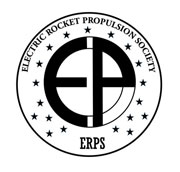View Awardees
International Electric Propulsion Conference Poster Session & Best Poster Award
A. Description
Best Poster Award (BPA) is an Electric Rocket Propulsion Society (ERPS)-sponsored award that is presented for each conference (starting in 2017) to all co-authors of the selected poster. The BPA is intended to recognize the best current research in the field of electric propulsion, as exhibited by a visual display of the research findings of participants at the Poster Session of the Conference. Posters are judged to be the best in terms of quality, innovativeness, significance of the work described, and excellence of the presentation.
B. Administration
The General Chair (GC) of the current IEPC will nominate a BPA Chair, which must then be approved by the ERPS President. The BPA Chair and the GC will review the registration roster of the conference and form a committee for in-person judging for the BPA. The judging committee will include the BPA Chair and supporting judges who are experienced ERPS members planning to attend the IEPC. The number of supporting judges shall be not less than two and should be sufficient to ensure each poster will receive at least two independent evaluations. The ERPS Awards Chair will review and approve the membership of the BPA judging committee.
The submitted posters will be subdivided into groupings in the same manner as oral presentations accompanying technical papers are subdivided into sessions. The manner of this subdivision, including the number of posters in each grouping, are at the discretion of the conference Technical Chair.
The BPA Chair will provide the judging committee with scoring sheets at the Poster Session. The judging committee will attend the Poster Session and individually score the posters. The BPA Chair will ensure that each poster is judged by at least two (2) different judges, though more evaluations are not discouraged. The BPA Chair will convene a brief meeting for discussion and selection. While a consensus winner is expected, the final recommendation is the responsibility of the BPA Chair. The BPA Chair breaks any ties and is the final authority on disputes.
The selection must be communicated to the ERPS President as per Section F with enough time to permit the printing of any award materials for presentation at the Awards Banquet of the current IEPC.
In addition to selecting the recipient of the BPA, the BPA Chair will tabulate all received scores. The poster with the highest average score within each poster subdivision will be identified, and if an accompanying full technical paper was submitted with that poster, that paper will be recommended for Best Paper Award consideration.
C. Poster Application / Submission
Applications for participation in the IEPC Poster Session are to be submitted in the form of an abstract consisting of at least 250 (but no more than 500) words describing the research to be presented. The submission must also include the poster title, author names, the name of the sponsoring research institution, and information (name, phone number, and email address) for the principal point-of-contact (POC – typically the lead author).
Authors who have submitted an abstract for a paper and oral presentation at the Conference but cannot meet the paper submission deadline can petition the Technical Chair and GC to accept a poster on the topic of the withdrawn paper (“paper-to-poster” change).
Authors may opt to submit a full technical paper with their poster submission. Those authors should note their intent to submit a full technical paper at the time of abstract submission. Full technical papers accompanying poster submissions shall be given an IEPC paper number and archived in the conference proceedings with the papers accompanying oral presentation submissions.
D. Poster Requirements
All posters in the IEPC Poster Session shall be the same size. That size shall be set by the GC of the current IEPC and the size limitations shall be strictly enforced to ensure that all posters fit within the poster session venue and that each poster is similarly limited in the space available to display content.
Title: The title will be a one-line description of the research followed by: 1) a list of the names of all participants, 2) the name of the sponsoring institution, and 3) primary contact information for the PI including name, phone, email, and, if appropriate, a project website.
Poster Content: The body of the poster will clearly illustrate the objective and results of the research. Key context, terms, and concepts will be included (please avoid jargon). Authors are encouraged to be creative and to include graphics, charts, and graphs.
General Rules: Posters are to be printed on lightweight paper or cloth so that can be mounted using thumbtacks. Do not print on thick foam-core board or other heavy boards.
E. Evaluation Criteria
Scoring will be based on the observations of the judges during an interactive question and answer period during the session.
Posters will be ranked based on the following judging criteria, which carry equal weight:
1. Quality of the work: Are the theoretical / experimental / numerical results of a high quality? Are sources of error and uncertainty discussed? (25%)
2. Innovativeness of the work: Does the poster demonstrate an innovative and original approach to addressing the described research? (25%)
3. Significance and potential impact on the field: Do the presented approach and results have the potential to significantly impact the field of electric propulsion? For example, can the findings contribute to a breakthrough or paradigm shift in understanding, lead to improvements in the design, manufacturability, cost, performance, or lifetime of thrusters, power processing, and/or feed systems, or change the way planners apply electric propulsion in missions? Do they create new opportunities for research, development, or application in the field? Examples of impact might include the development of valuable new concepts, meaningful enhancements to existing approaches, or expanded opportunities for integrating electric propulsion into innovative mission planning. (25%)
4. Excellence of presentation, clarity, organization, and conciseness: Is the poster well designed and organized? Are the major points clearly and concisely illustrated? Are the graphics clear and easy to interpret? (25%).
F. Ratification
The recommended Best Poster selection is presented by the BPA Chair and GC through the ERPS Awards Chair to the ERPS President for Ratification.
G. Award Value
The authors of the selected poster will receive a total stipend of $500.00.


